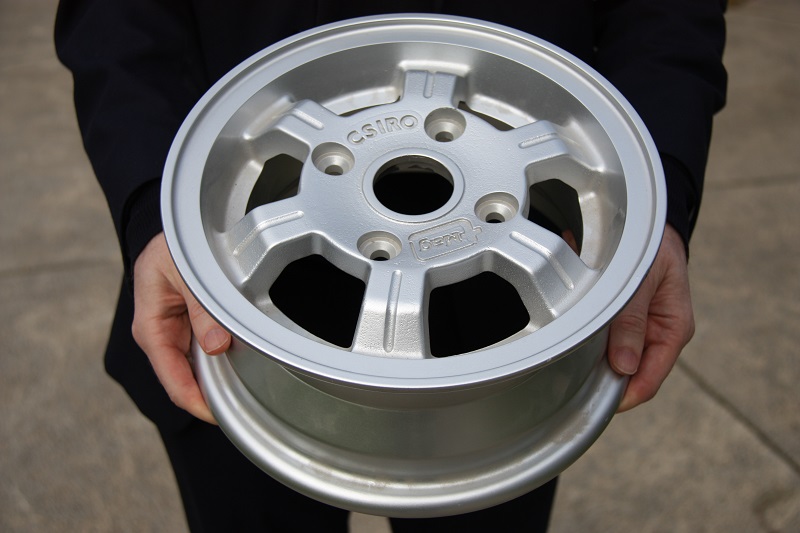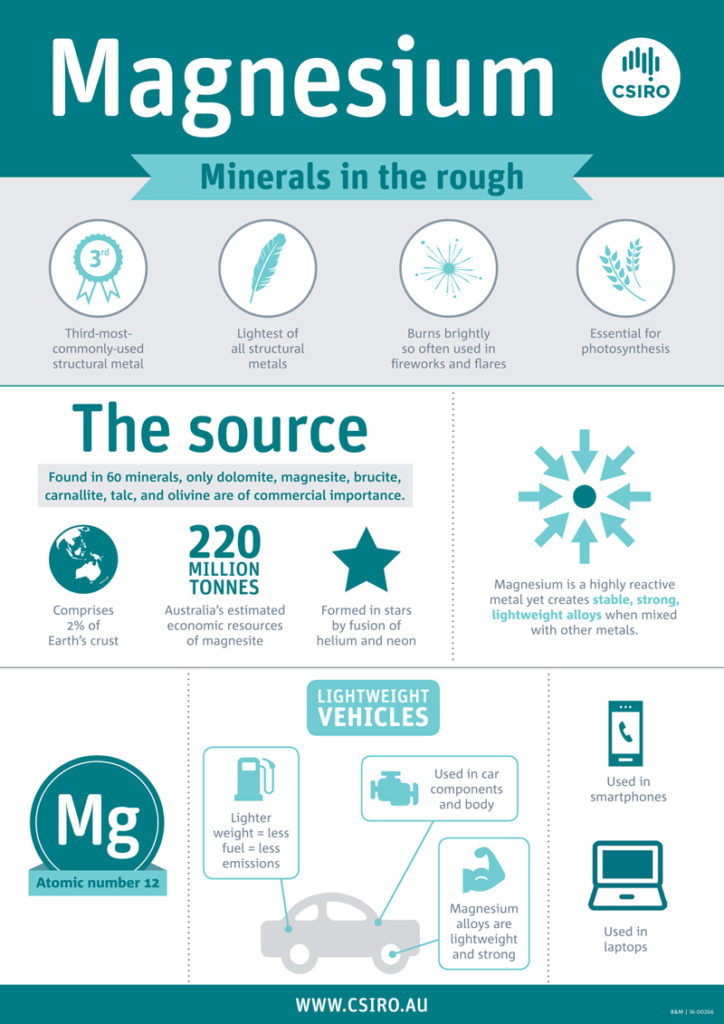Our MagSonic technology produces magnesium metal at the speed of sound. Not only is it fast, the process also consumes 80% less energy and produces 60% less carbon dioxide emissions than traditional methods.

Our T mag magnesium casting technology was used to make this strong, light weight wheel rim; just one of a suite of magnesium technologies we have developed.
Our T-mag magnesium casting technology was used to make this strong, light weight wheel rim; just one of a suite of magnesium technologies we have developed.
It’s used to make our smartphones and cars, and it makes our fireworks go off with a brilliant bang. It’s the third most commonly used structural metal and comprises 2% of Earth’s crust. We are of course talking about magnificent magnesium.
Why do we think it’s so magnificent? Well, when magnesium is mixed with other metals it makes stable, super-strong alloys. Not only are these alloys used in our mobile phones and laptops, they are also highly sought after by car manufacturers who are turning to the metal as a solution for making lightweight, low-emission vehicles.
Australia is sitting in the driver’s seat to deliver new, improved, ‘supersonic’ magnesium metal and take advantage of our vast untapped reserves of magnesite. So we’ve decided to take the wheel and develop an innovative technology, known as MagSonic, which produces magnesium using up to 80 per cent less energy and up to 60 per cent less carbon dioxide emissions than traditional processes.
The process involves heating magnesia (magnesium oxide) with carbon to extreme temperatures to produce magnesium vapour and carbon monoxide. The gases are then passed through a supersonic nozzle – similar to a rocket engine – at four times the speed of sound. This cools the gases in milliseconds, condensing and solidifying the magnesium vapour to magnesium metal.

Infographic showing the different uses and facts of magnesium
Magnificent magnesium facts.
Dr Mark Cooksey, who leads our sustainable processing group, said commercialisation of MagSonic would make the metal’s production more cost effective.
“The growth of magnesium use has been limited because it’s been too expensive and labour-intensive to produce the metal from ore using traditional processes,” said Dr Cooksey.
“MagSonic technology offers an economically viable solution to overcome these issues and make cleaner, cheaper magnesium more available and affordable to manufacturers.”
New market for Australian magnesium metal
Not only is MagSonic more environmentally friendly, it also has the potential to create new business opportunities in mining and manufacturing.
Supplying reliable magnesium production to the Australian and global market has the potential to benefit other emerging industries like electric vehicle manufacturing. Not only that, Australia has an estimated 220 million tonnes of magnesite ore available to feed into the process.
We are working with Enirgi Group’s Innovation Division to further develop and validate the MagSonic technology. Once the technology is proven ready for commercialisation, Enirgi Group could build the first commercial scale magnesium production facility in Australia.
In recent years we have been developing new sustainable technologies to help the Australian metal production industry compete in an increasingly environmentally-conscious and globalised world.
MagSonic compliments a suite of process technologies involving magnesium, including our magnesium casting technology T-mag, which is produced in Adelaide by a spin out company of the same name.
See more of our work in Mineral Resources and check out how we could help your business.


17th July 2018 at 12:43 am
Mark, Is it if you cool it down too slowly, the carbon monoxide reacts with the mag metal to form carbon again?
17th July 2018 at 8:43 am
“Exactly. If you cool the magnesium (Mg) metal gas and carbon monoxide (CO) gas too slowly through the temperature range of about 1400 C down to 1100 C, then the magnesium metal and carbon monoxide will react back to the original materials: magnesium oxide (MgO) and carbon.” – Mark Cooksey
20th July 2016 at 7:41 pm
Wonderful development. Pity about using carbon for the reduction process when hydrogen, from cracked methane or solar electrolysis would do a better job with far less pollution to the environment and the product.
Cracked methane http://www.chemicalprocessing.com/articles/2015/researchers-crack-methane-cracking/
The resulting waste products are all saleable, carbon and fresh water, here in Australia we have the solar to do this on large scale.
21st July 2016 at 2:57 pm
We have considered reduction by hydrogen, but the thermodynamics appear more difficult. We decided to initially concentrate on reduction by carbon to reduce the risk. I expect that we will revisit reduction by hydrogen in the future.
20th July 2016 at 5:05 pm
Where does the carbon monoxide go after cooling?
21st July 2016 at 2:55 pm
In a commercial plant, the CO will be recovered and combusted to produce heat and/or electricity
20th July 2016 at 4:19 pm
would you be able to hook me up with a set of those mags in a 7×14″ size with 114.3 pcd and a 35mm offset? happy to track test them and give you my feedback. thanks so much